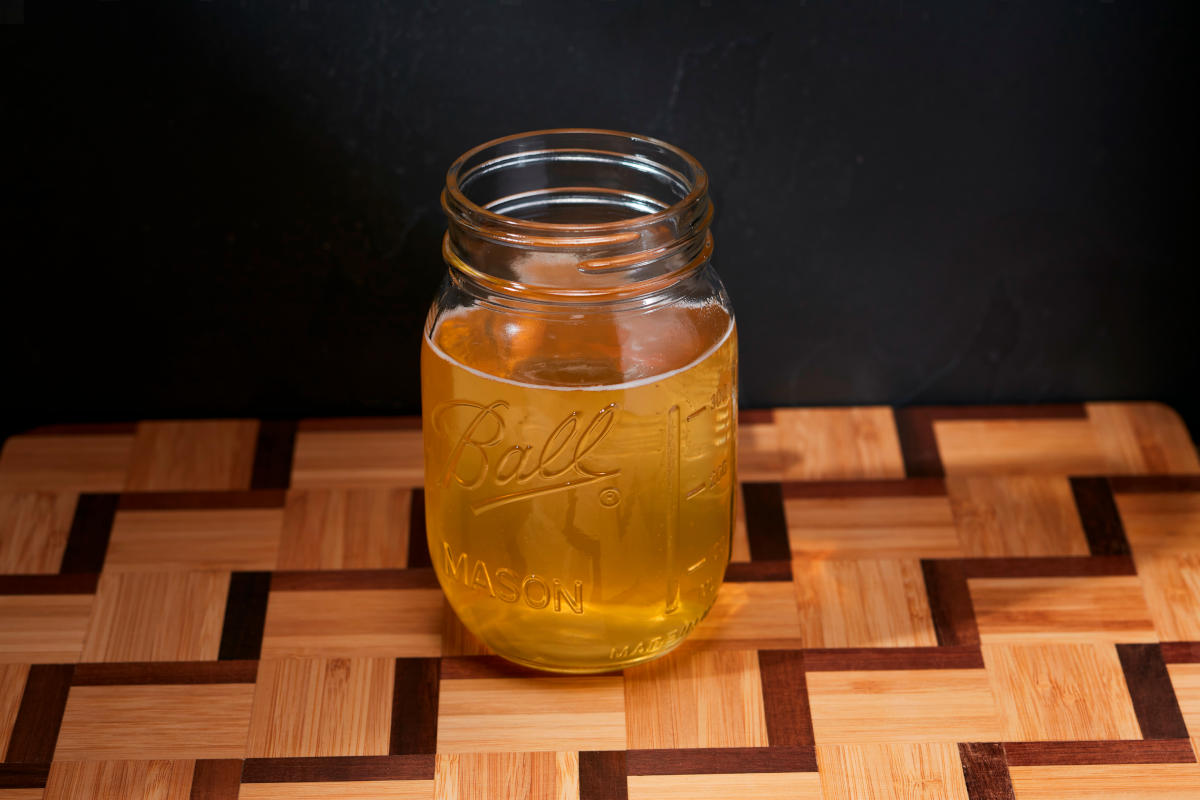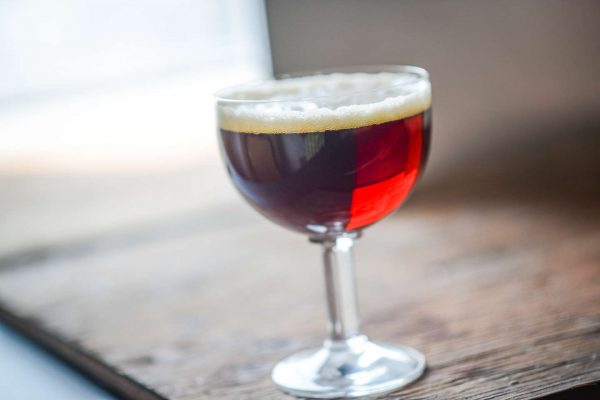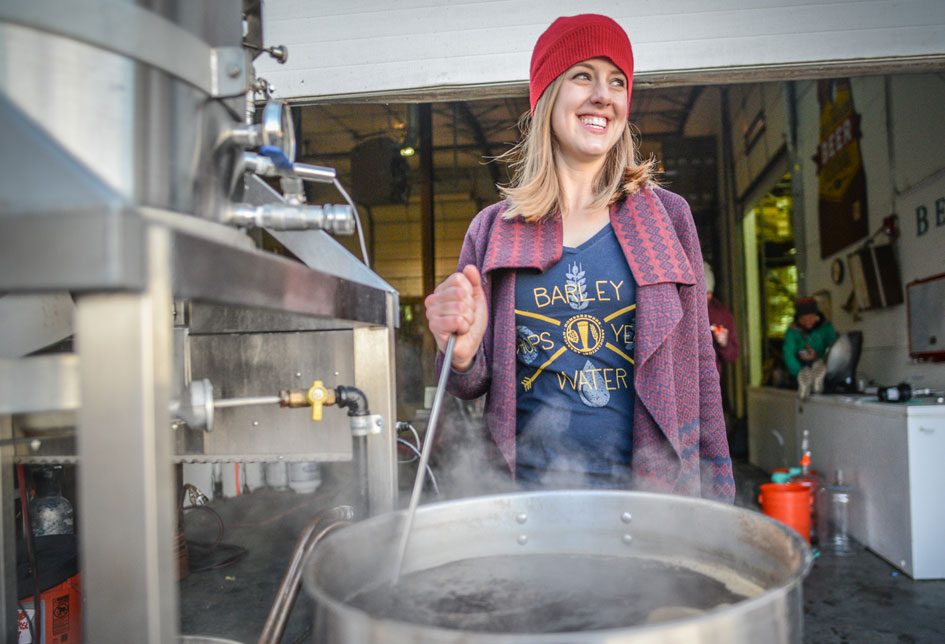
By Kevin Meintsma
What is a hydromel?
Hydromel is two Latin words combined to mean water (hydro) and honey (mel). Modern language also calls them “short” or “session” meads.
There is no specific “style” definition for hydromels, but from a competition standpoint, the original gravity (OG) and strength (ABV) are the primary components of the Beer Judge Certification Program (BJCP) mead guidelines. These guidelines state that hydromel is under 8% ABV with starting gravities in the 1.035-1.080 range. Note that if you start at 1.080, you’ll likely land well outside of the ABV guideline because hydromels tend to ferment completely dry.
The commercial mead industry does not have a standard as yet to define hydromels and the processes in which they’re made. Some meaderies (and homebrewers) make a higher-gravity mead and dilute with water or backsweetening post-fermentation. Others make their meads with fewer fermentable sugars. Both approaches can produce similar and desirable results.
For me, the goal is generally to produce meads that are 5% or lower so they remain genuinely sessionable, and I avoid dilution because I feel that my results are better when crafting a recipe with the final goal in mind.
Why make a hydromel?
Lower alcohol: When the alcohol level (ABV) is low enough, you can safely enjoy one or two glasses. This is particularly true when sticking to the lower end of the BJCP guidelines for hydromel strength.
Production speed: Depending on how you make the hydromel, serving within ten days of starting the fermentation is possible. This permits more experimentation and speeds up learning and technique development.
Cost efficiency: Hydromels use less honey and generally less of any other ingredients when compared to standard (OG: 1.080-1.120) and sack (OG: 1.120-1.170) mead.
Embracing the trend: With the rapidly increasing number of commercial meaderies in the United States, and with most of them having tasting rooms, hydromels have become a significant component of those businesses.
What is the easiest hydromel to make?
From a process standpoint, I think by far, the simplest mead you can make is a traditional (or sometimes it’s called a “show” mead). Traditional meads focus on the core ingredients: honey, water, yeast, and typically some yeast nutrient addition.
A hurdle with the lower-strength traditional meads is it can be challenging to showcase the character of the honey varietal.
What is the best hydromel to make?
As with any mead recipe, the options are seemingly limitless. Fruit meads have tremendous appeal, and spice/herb/veggie combinations make wonderfully refreshing hydromels.
What equipment is needed?
Bucket-style fermenters with a capacity of 8 gallons work especially well for fruit hydromels. In addition, a large paint strainer bag can be beneficial to separate the mead from ingredient debris, and for the mead recipes detailed below, it’s highly recommended.
You will likely want to carbonate your hydromel, so you’ll need to have some way to accomplish this. It’s pretty challenging to bottle condition a hydromel and any residual sweetness without a high risk of bottle bombs (this is not like beer where you have unfermentable sugars remaining after bottle conditioning). A dry hydromel may be precisely what you want, in which case you can bottle condition safely. But I’ve found that most people prefer some residual sugar in their meads. With that in mind, you’ll need some way to add forced carbonation to the mead. At a minimum, for this, you’ll need a CO2 cylinder and a regulator. After that, you can of course add CO2 with a kegging system, or as an alternative you can use a screw-on “carb cap” in combination with 1 and 2 liter PET soda bottles.
Best Practices
Use good quality honey that is complementary to the other ingredient choices. Bold or distinctive flavoring ingredients work best, and you need good water. RO or low minerality spring water has worked well for me. If you are using dry yeast, rehydrate with GoFerm Protect at a ratio of 1.25 times the weight of your yeast, and add water at 20x the weight of the GoFerm. I front load (instead of staggered nutrient additions) Fermaid O (SIY yeast nutrient) at a rate of roughly 2 grams per gallon of must for fruit meads, 2.5 gr/G for spice/herb meads. Front loading is highly recommended because hydromels ferment rapidly.
“Punch down” the fruit cap daily. This is the layer that forms at the top of mead made with fruits. I find no need to “degas” the mead.
Nutrient and Tannin additions such as OptiRed (or OptiWhite), plus VR Supra (or Wine Tannin) and FT Blanc Soft tannins can enhance body, roundness, perception of sweetness, and color stability.
Temperature control ensures the yeast is producing the desired results.
Post-fermentation acid adjustments can add the finishing touch taking your mead from lackluster to bright and refreshing. If you only buy one acid, Tartaric is a good contender!
The use of a fining agent can give your mead the final polish and clarity before serving.
Recommendations
First, let’s consider two of the most common negative impressions people have with hydromels. They are thin and watery, and they lack flavor. Yes, many hydromels suffer from these issues. But, they don’t have to!
Choose honey with a distinctive flavor that is fairly robust, which will pair well with your other ingredient choices.
For example, amber wildflower honey pairs nicely with dark berries. Star thistle or orange blossom honey pairs well with stone fruits like mango, peach, and apricot.
Yeast choice can also have a powerful impact. For example, Lalvin 71b – Narbonne works quite well with dark berries, producing esters that enhance aromatic profiles. It is a workhorse that makes it easy to use in homebrewing settings. Hornindahl Kviek (or Voss) pairs exceptionally well with citrus and stone fruits, and has the added benefit of being incredibly temperature tolerant.
Two Hydromel Recipes
Two hydromels are detailed below that are regularly on tap in my household.
Berry Hydromel Recipe
The first one is my take on a Curt Stock-style triple berry mead, made as a 5.5% hydromel (after back sweetening) for 5 gallons with a starting gravity of 1.050.
- 5 lb. amber wildflower honey
- 16 lb. frozen triple berry fruit blend (blackberry, raspberry, blueberry)
- 4.8 g pectic enzyme (added to the fruit mixture 12-24 hours before adding to other ingredients)
- 2.75 gal. of RO or spring water
- 4 g of OptiRed
- 1 g of wine tannin
- 4 g of FT Blanc Soft
- 10-12 g Lalvin 71B dry yeast
- 15 g of GoFerm
- 13 g of Fermaid O
Add the pectic enzyme to the fruit and enough of the water to mix thoroughly (less water is better). Place into refrigeration for cold maceration. After 12 to 24 hours, add the remaining water and mix thoroughly, bringing the must up to your fermentation temperature. Heat an additional 10oz of water to 110F, add the GoFerm and mix thoroughly, letting it stand for 20 minutes. Maintain the mixture at 95F, then mix the yeast and allow it to bloom for 5 minutes. Next, acclimate the yeast by adding 5 ounces of the must (sans fruit) to the yeast mixture at 5-minute intervals until the yeast is within 10F of the must temperature. Pitch the yeast and mix thoroughly.
Meanwhile, warm an additional 6 ounces of water and combine the OptiRed, wine tannin, FT Blanc Soft, and Fermaid O (we are “front” loading all of the nutrients). Add these ingredients after pitching the yeast. Ferment at 64F until reaching terminal gravity. Then, stabilize using potassium metabisulfite and potassium sorbate, back sweeten to taste and carbonate before serving.
Tropical Fruit Hydromel Recipe
The second hydromel recipe is a 4.6% (after back sweetening) tropical/stone fruit mead that is refreshing and bursting with mango, peach, and citrus flavors. For 5 gallons (net) with a starting gravity of 1.040.
- 5 lb. star thistle honey
- 12 lb. mango slices or cubes
- 1.5 lb. pineapple (as ripe as possible)
- 1.5 lb. peaches
- 1.5 lb. strawberries
- 4.8 g. pectic enzyme
- 4 gal. RO or Spring Water
- 5 g. OptiWhite
- 0.25 g. wine tannin
- 5 g. FT Blanc Soft
- 10-12 g. Hornindahl Kviek yeast
- 15 g. GoFerm
- 16 g. Fermaid O
Follow the process described above for the berry mead recipe with this exception: ferment at 95F to 100F. Do not be surprised if this reaches terminal gravity in well under 48 hours.
Enjoy!
About the Author
Kevin Meintsma is a long-time homebrewer of beer, cider, and grape wines, and according to his patient and long-suffering wife he’s become obsessed with mead during the past 4 years. His mead focus at this point has been primarily on process and technique, now expanding into exotic varietal honeys and unique flavor combinations with 75% of his meads made as hydromels. He competes regularly and greatly enjoys the camaraderie of his local brewing community. He is currently the organizer for Valkyries Horn Mead Competition.






Share Post